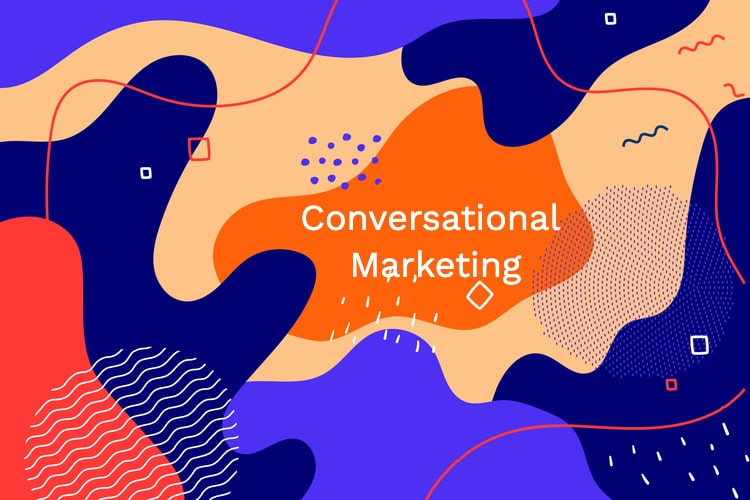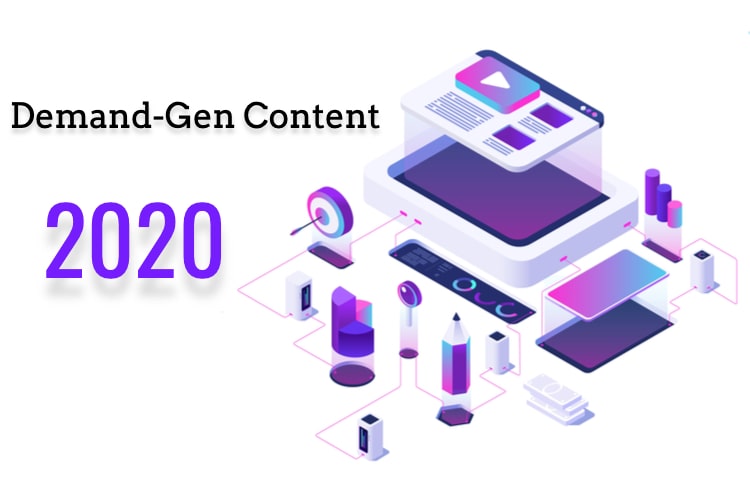When was the last time you felt like your audience was truly engaged in your content?
If you can’t remember, you might be missing out. New trends in the fluid, two-way flow of information may be leaving you out of the conversation. Interactive content marketing is about connecting, communicating, and comprehending.
Consumers want to be part of the conversation and online interactive marketing facilitates this communication. How effective is this collaboration?
A whopping eighty percent of discretionary purchases today are the result of interactive marketing. There’s a saying that if you continue to do what you’ve always done, you’ll keep getting the same results that you’ve always gotten.
In the case of marketing, you may find yourself getting fewer results than you did before if you are not engaging your audience with meaningful conversations and experiences that have value.
Now is the time to tap into the potential for interactive content marketing. This strategy works because it applies developmental, behavioral, social and educational psychology principles to improving the way consumers may interact with your brand.
If you use the principles of psychology in your marketing, you may see your conversions go through the roof.
Creating experiences for your audience matters because didactic content marketing is becoming a thing of the past.
It’s no longer enough for your network content to be lecture-like and moralistic, static, and inflexible. Today’s content is dynamic. It combines many of the things you may already be doing, and the professional content creates the kind of experience your clients yearn for.
To maximize your audience’s engagement experience, consider interactive content marketing to generate memorable experiences. Encouraging consumers to create their own understanding and share it with others is one of the most effective designs you can implement.
People create their own understanding through experience, and these experiences allow for simultaneous development and learning; this organic process is called constructivism, which is the work of psychologist Lev Vygotsky. Other big players in the psychology field include Jerome Bruner, John Dewey, and Jean Piaget.
The principles of psychology illuminate why interactive content marketing is so effective.
Information, education, and entertainment make up the backbone of interactive content, as digital gaming and virtual learning experiences have shown for years. These digital arenas allow for risk-taking in a safe environment.
Understanding how these psychology theories explain human behavior helps you improve your content writing process and apply the principles in your marketing outreach.
Using the tenets of psychology in your marketing strategy will make a difference in how you engage your audience, and here’s why.
Learning Capacity Increases
You learn better if you are allowed to construct meaning for yourself.
When you are given the opportunity to create your own learning, you naturally compare your new experiences to what you already know. Comparing and contrasting prior experiences with new experiences is how you learn. Because the experiences are unique to you, it makes sense that you should be the one constructing meaning from them, not someone else.
Psychologist John Dewey established that individuals create understanding based on their participation. He also cautioned that continuity and interaction had to be a part of learning experiences. Continuity builds on previous experiences; it is the organization and structure of any content. Interaction with high-quality content creates necessary positive experiences.
Your content marketing and content writing strategy should include continuity and interaction, and it must provide logically structured experiences that help your audience with a solution.
The structure comes from the content marketing funnel that makes up your strategy. This funnel determines content development, organization, and deployment; it does not interpret.
You don’t need a “sage on the stage” to tell you what you are learning. You need a “guide by the side” to facilitate your progress. Any interpretation you create comes from context —in this case, interactive content – and the meaning of the content is personal.
Learning and content engagement is active rather than passive learning. Robert Rose of CMI says content-driven experiences are the next level in marketing. Your content must allow your audience to create personal meaning from the experience you provide. Each individual determines the value of your content based on his or her experience.
Actions Speak Louder Than Words
You like to be actively engaged, not talked at while you listen passively. Your content marketing strategies should engage your audience.
Mark Twain said, “Don’t say the old lady screamed. Bring her on and let her scream.” This is the whole show, don’t tell concept. Avoid telling about something when instead you can show what you mean.
No one wants to read the weather report; you prefer watching the sweeping, colored imaging layers on the radar for winds, temps, cloud coverage and even flight conditions.
Your audience doesn’t like passive learning, either; consumers are looking for meaningful ways to experience your brand. Your content marketing strategy can incorporate interactive learning in these ways:
- Interactive quizzes
- Connected learning
- Calculators for amortizations, BMI, property taxes and more
- Virtual dressing rooms
Don’t brush off interactive media as a fad; Metro Trains in Australia created $60m in earned media with their interactive app called, “Dumb Ways to Die.”
You may think these interactions are nothing more than novelties. Novelty can be highly effective in your content writing and marketing strategy because the newness of interactive content attracts inquisitive consumers.
Jean Piaget first identified the importance of piquing interest in learning new concepts when he studied how children learn. Children are more willing to learn when the material relates to something they already know and delivers an element of the unknown. The same is true of adults.
To apply Piaget’s theory to your content marketing strategy, create a new experience that is based on common understanding in a novel way.
Thematic Approaches Create Memorable Links
Themes give you a connection and help you remember.
Grounded in humanistic psychology, themes build on understanding by creating layers that connect; understanding does not exist in isolation. All experience is connected.
Psychologist Jerome Bruner established that learning happens within context. People innately are wired to constantly look for patterns and connections rather than collect a myriad of stand-alone facts.
Being able to interpret patterns and make connections may have meant the difference between life and death at one time. Successful humans quickly learned the cause and effect cycle of poking a saber-toothed tiger with a stick.
Contemporary times may bring fewer worries about feral cats with long fangs, but themes are critical in today’s world as well. Your ability to interpret your world and act accordingly makes you successful.
Themes are also interesting; they grab your brain, forcing you to integrate and connect images, actions, and ideas. A good theme causes you to identify, analyze and apply what you are learning.
An example is Kate Spade’s theme, “Live Colorfully.” Her theme works on multiple levels, including design and marketing. Spade products splash playful color into a world that might be otherwise drab. The company’s theme also works esoterically: your actions should be just as colorful as the products you use.
Color – and any of the Kate Spade products – is easy to identify. You can find ways to incorporate more color into your life. You can apply the theme, too, by making your personal actions more colorful. Every aspect of the theme applies to a facet of your life.
No single part of your marketing strategy may exist in isolation, either. Each strategy must make up a whole, and that whole creates your theme.
Social Interactions Make a Difference
You may feel like you can do more, travel farther and be more efficient if you do everything yourself, but that’s not true. There is strength in numbers.
The psychology behind that idea comes from Lev Vygotsky, who was responsible for the theory of constructivism. Not only did he believe that social interaction actually improved understanding, but also he developed the Zone of Proximal Development (ZPD) to show how interaction in social groups builds capacity for everyone.
According to Vygotsky, a group learns and works at a much higher level together than the individual can work on his own. Together, they construct understanding both in the group and alone by adding new experiences from active learning opportunities to what they already know. As the aptitude of the group increases, so does the capacity of the individual, which in turn, influences the ability of the group.
Everyone moves upward, much like climbing the rungs of a ladder. As the group moves up a level, so does the individual.
In terms of content marketing, you are stronger when you collaborate with others. Constructivism allows your alliance to work in two ways: with your audience and with your marketing team.
In interactive marketing, you construct meaning through continuous conversations with your audience, which will improve your ability to respond to their needs. Your marketing team should strategize your content to maximize your engagement with your audience and their engagement with you.
Expand your interaction and increase your own capacity by collaborating with content writers who are subject matter experts in the delivery of rich and meaningful content for your interactive marketing strategy.
Creating Reciprocal Opportunity
It’s called karma.
One thing always seems to lead to another, and in the case of reciprocity, that’s true. For example, if you are happy at work, you will likely do a better job. If you do a better job, you find that you are happier are work, and when you are happier . . . you get the idea.
Giving more helps you receive more, and this is true of your content marketing, too.
People like to return favors for each other; they want to create good karma. Do you need your back scratched? Whose back can you scratch? There are plenty of ways you can create good karma and reciprocity with your content:
- Advertise others on your page
- Create recommendations on LinkedIn and other sites
- Newsletters
- eBooks
For immediate engagement, swap information. Trade useful information in return for contact information. Your audience’s urge to reciprocate with you is strongest upon your first contact with them. That’s why you should ask for an email address right away when you offer a free download such as an eBook.
Then reach out with offers of greater value. Because the consumer already has a relationship with you, they are more likely to want to interact with you again.
If you don’t experience the interaction you are looking for with your audience, changing your marketing strategy may be your next step. It is possible that the lack of engagement is not due to your product; it’s your content marketing strategy that is holding you back.
Be sure you are providing the right kinds of experiences to each target group. People want to connect; effective marketing allows them to do that.
There is a caveat, however, to those hungry for reciprocity: don’t load your plate too full – using connectivism psychology in marketing is not like going through the buffet line like it’s the last time you’ll eat this week. Knowing how to strike the right balance is critical – to your success and to your time management.
Offer to help others out, and they are likely to return the favor. This quid pro quo interaction is part of a newer principle in psychology called connectivism. Based on Vygotsky’s principles of constructivism, connectivism evolved from Activity Theory, and it explains how people work, learn and live. No one person holds all the information; knowledge is shared across multiple networks. Anyone can tap into the knowledge base if he or she is connected.
Your connection to this knowledge base affects your experience, and your experience affects your connection.
Steve Jobs Explained how Connectivism Works:
“Creativity is just connecting things. When you ask creative people how they did something, they feel a little guilty because they didn’t really do it, they just saw something. It seemed obvious to them after a while. That’s because they were able to connect experiences they’ve had and synthesize new things.”
Interactive and creative content gives everyone the chance to synthesize new experiences, be creative and make new connections.
To develop and deliver interactive experiences for your audience, remember these five reasons to incorporate principles of psychology in your interactive marketing strategy:
- Capacity increases through structured experiences.
- Actions drive results.
- Themes improve memory, ability to recall and understanding.
- Interaction boosts your ROI in content marketing.
- Reciprocal opportunities advance everyone.
Your Next Steps:
Get your audience to take action. How do you get anyone to take action? Intentional interactive experiences create a willingness to engage.
If you are ready to move your content marketing strategy to the next level, here are some things to do right away when applying the principles of psychology to experiential content:
- Create safe interactions. Social learning is most effective when the environment is safe. Establish protocols or ground rules for the interactions, and then allow your audience to have fun while exploring your world.
- Permit flexibility. Listen carefully to your audience to see where the next steps will take you.
- Be authentic. The wise man Polonius told Hamlet, “This above all, to thine own self be true.” If you are true and authentic to yourself, you will be that way with others, too. Give real value.
- Scaffold your content. Rather than throw everything at your audience at once, offer your content in funneled steps, allowing consumers to build on each experience they have with you.
- Encourage discussion. You learn more from listening than from talking.
- Create high-quality content. Resurrect your blog, develop eBooks and newsletters, write a quiz – you have a panoply of choices that will engage your audience and drive conversions.
- Include the services of a professional content writing service. Professional copywriting services like Rightlywritten can help you build the dynamic content you need for your interactive marketing strategy.
There is an African proverb that sums up interactive content marketing:
To go fast, go alone; to go far, go together
How far you go is up to you.
So where are you in the interactive marketing strategy conversation?
Take the QUIZ!








